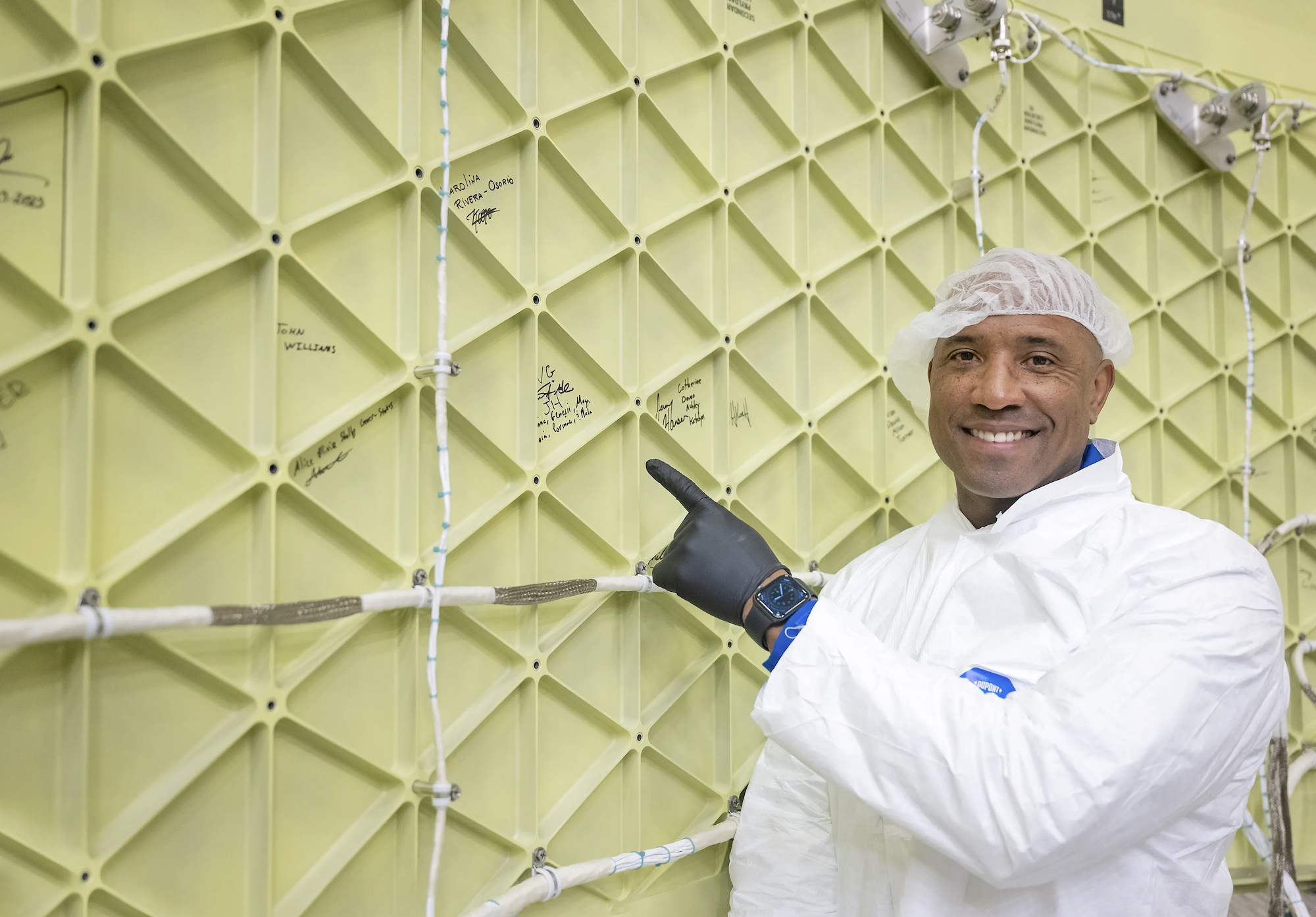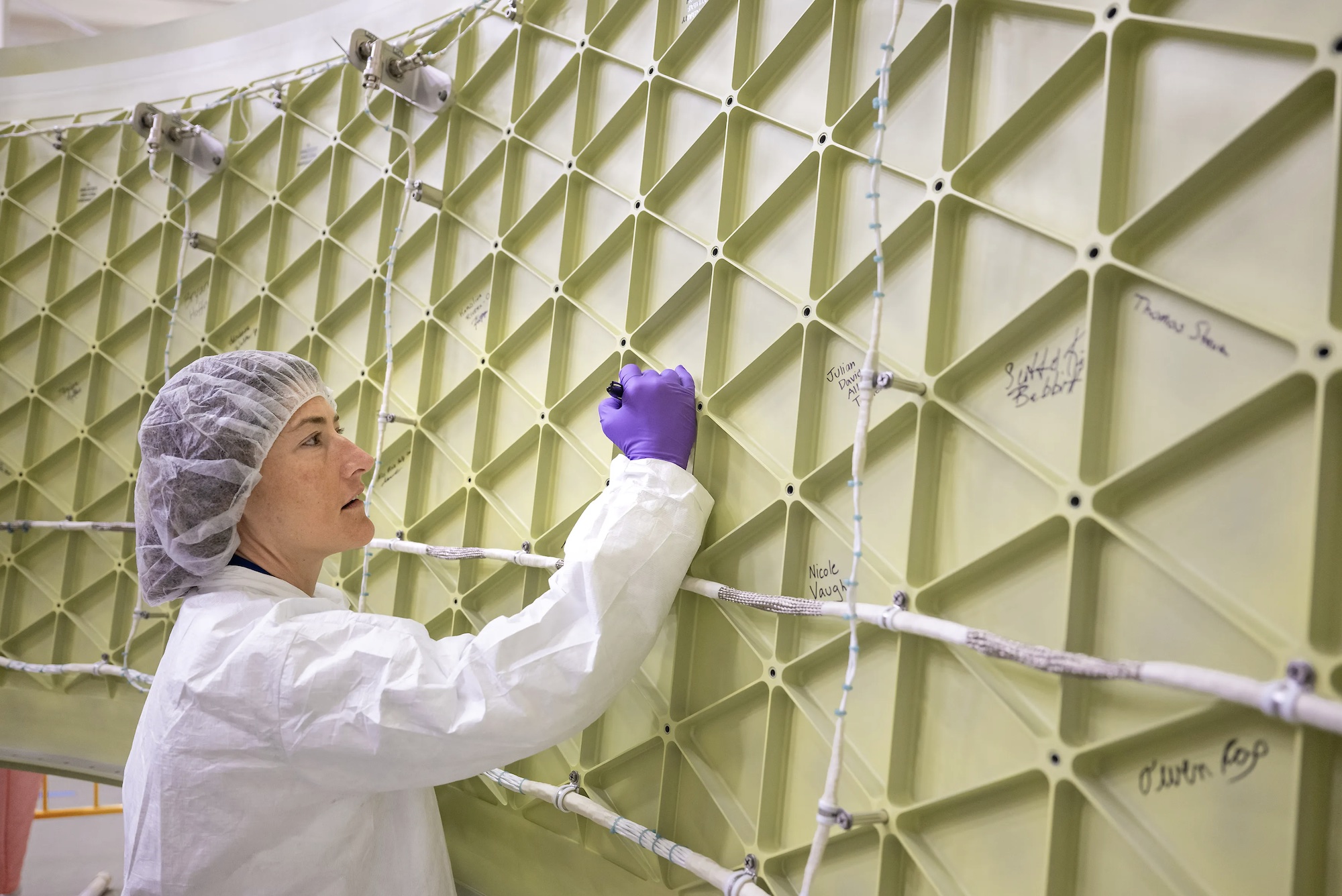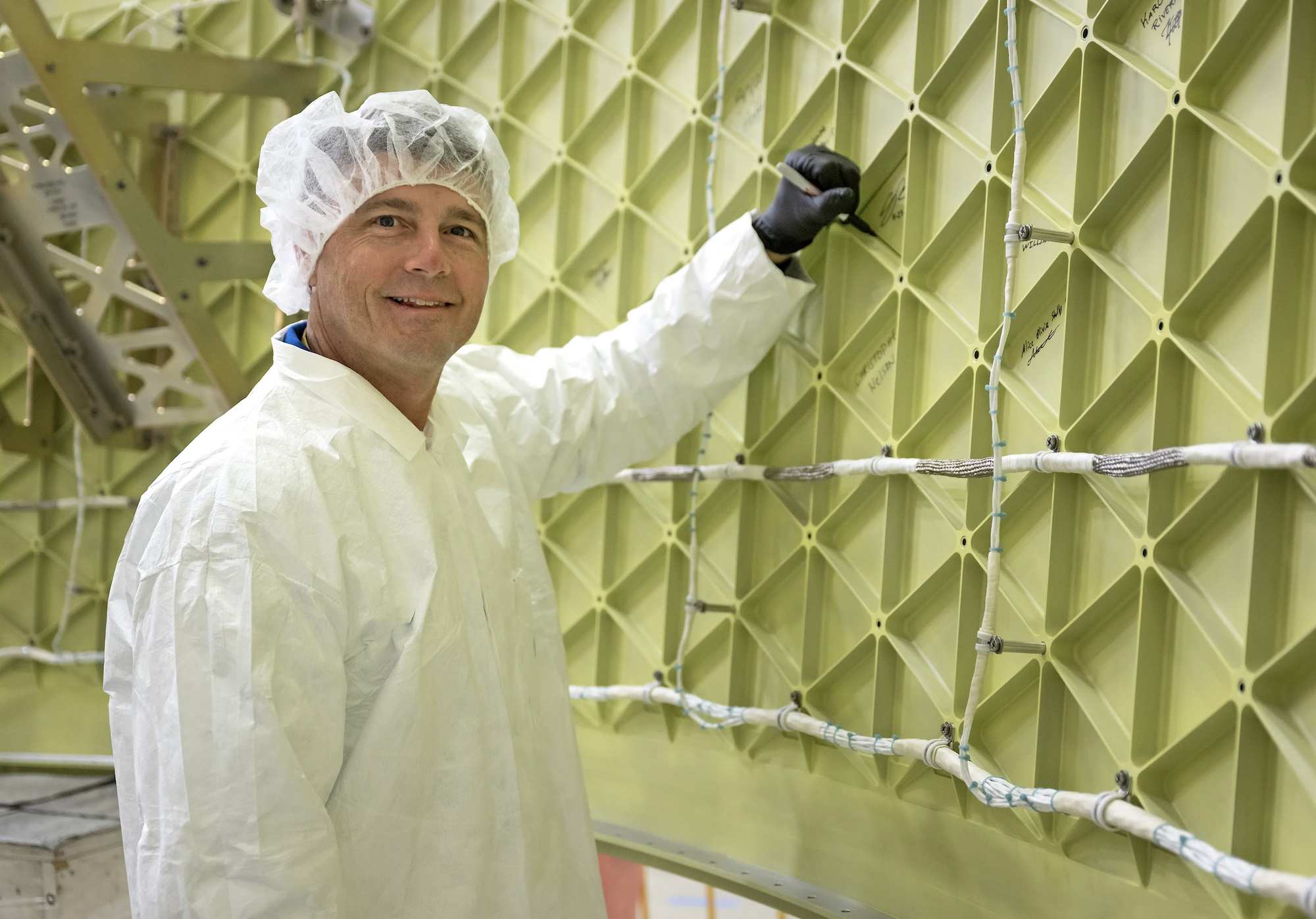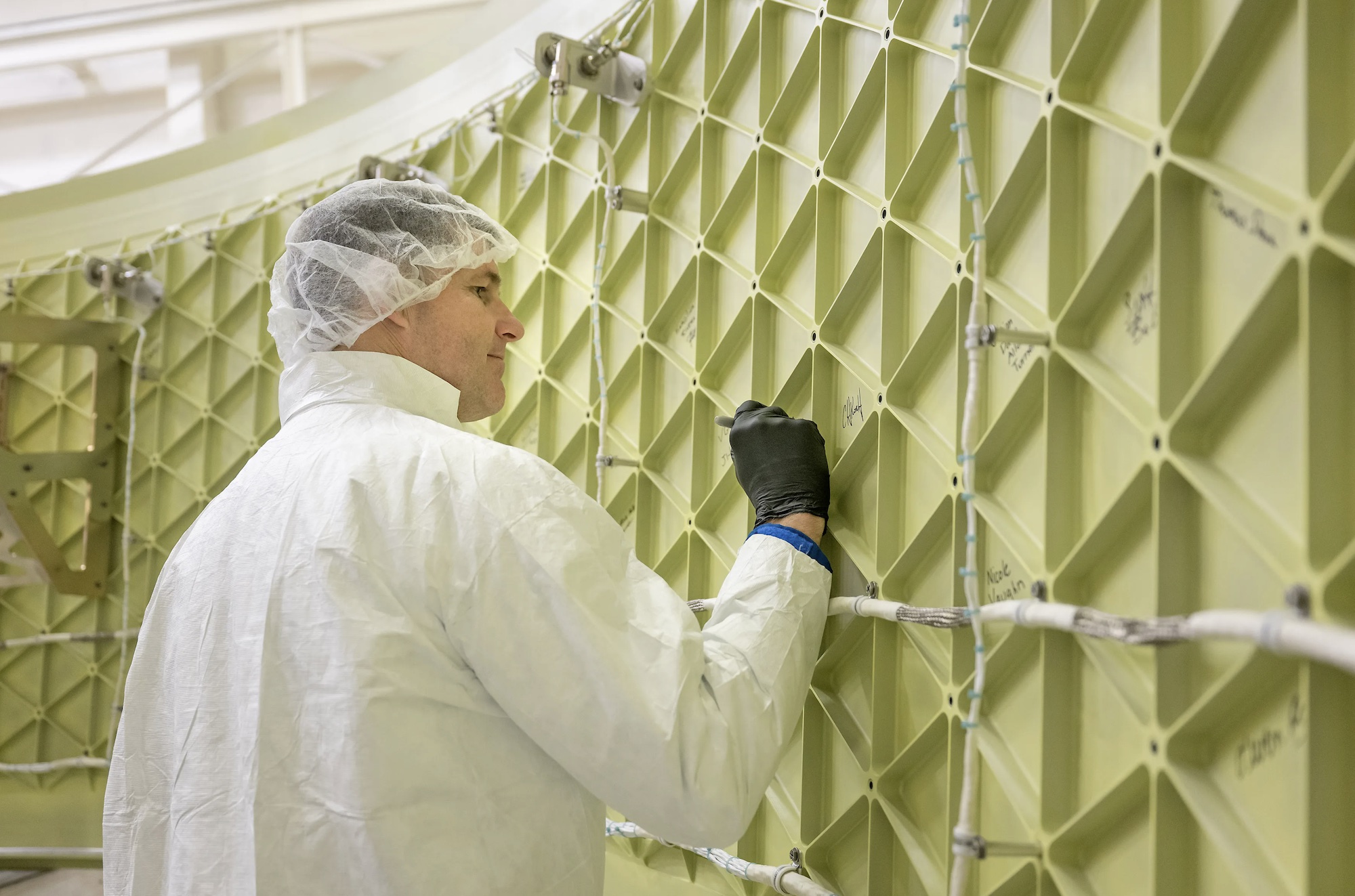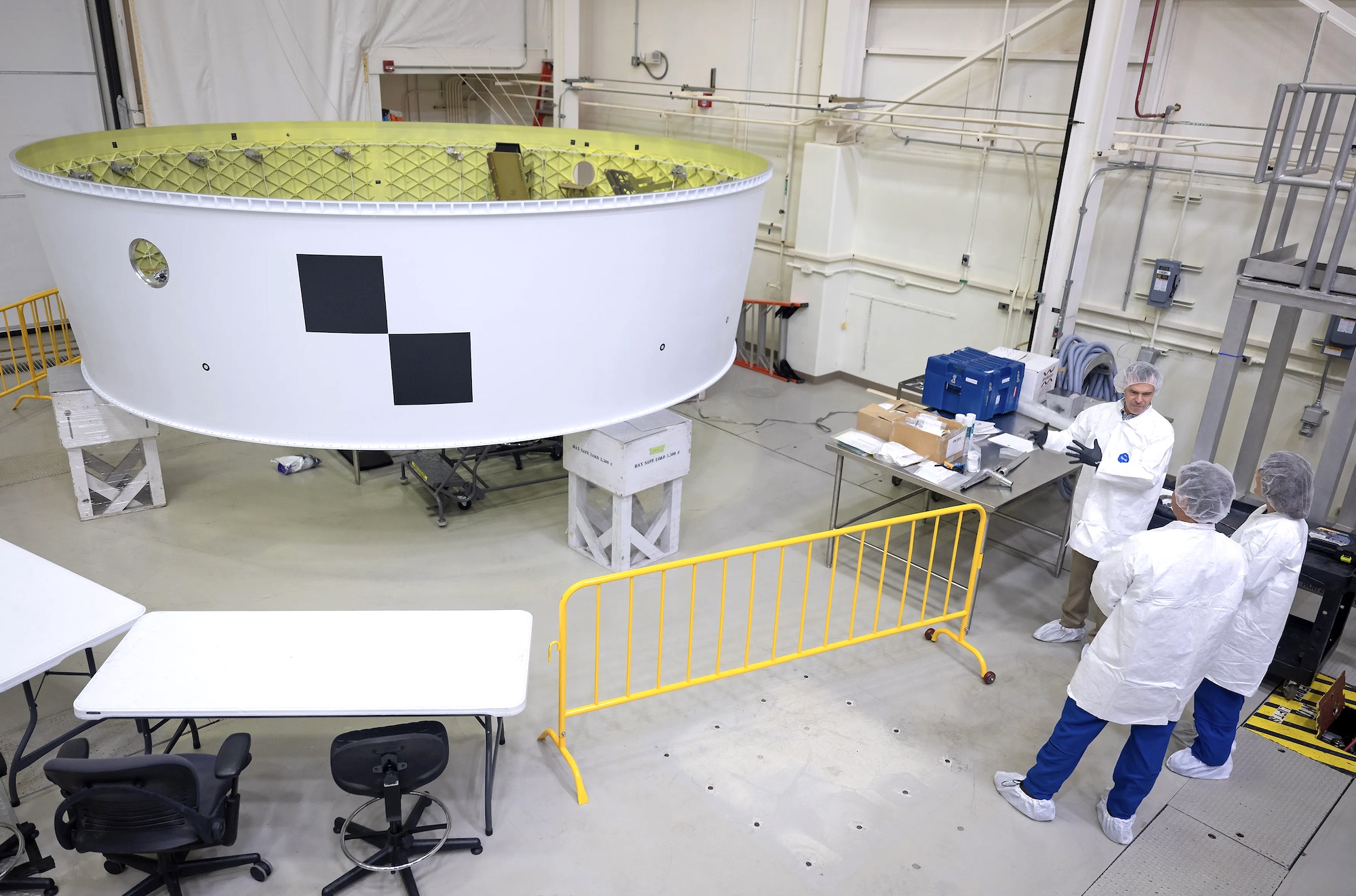It’s surely the least important part of their preparations, but this week the four Artemis II astronauts had the pleasure of signing their names on a section of the launch vehicle that will blast them toward the moon a year from now.
NASA astronauts Victor Glover, Reid Wiseman, and Christina Koch, and CSA (Canadian Space Agency) astronaut Jeremy Hansen, signed the stage adapter for the SLS (Space Launch System) rocket at NASA’s Marshall Space Flight Center in Huntsville, Alabama, earlier this week.
The stage adapter is the topmost portion of the SLS rocket and sits just below the Orion spacecraft that will carry the four astronauts to within about 80 miles of the lunar surface in what will be the first crewed lunar trip since the Apollo missions five decades ago.
During the Artemis II launch, the stage adapter’s diaphragm will serve as a barrier to prevent harmful gases created during launch from entering the spacecraft.
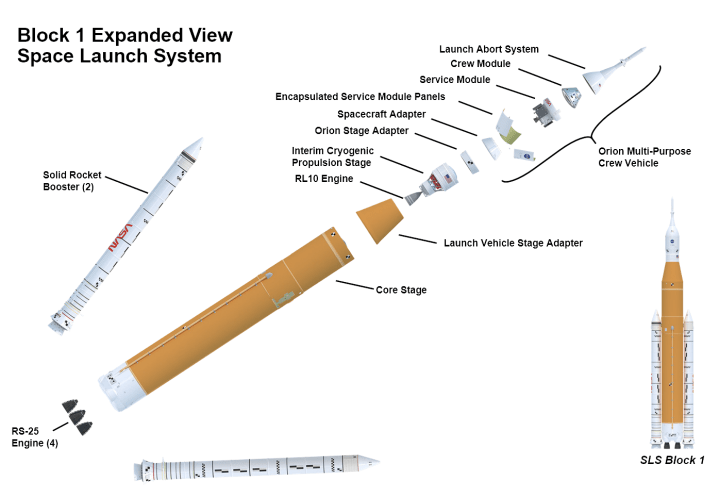
In the image above, you can see the precise location of the “Orion stage adapter” just above the SLS rocket’s interim cryogenic propulsion stage. The adapter is five feet tall and weighs 1,800 pounds, which NASA says makes it the “smallest major element of the SLS rocket.”
As with last year’s Artemis I test mission, the adapter will be jettisoned in the early stages of the mission and will fall back to Earth.
Glover, Wiseman, Koch, and Hansen are now undergoing extensive training for next year’s 10-day mission, which will take them not only right up close to the moon’s surface, but also further from Earth than any human has ever traveled before.
In August, the four astronauts were given their first close look at the actual Orion spacecraft that will be taking them on their epic journey.
A successful mission will pave the way for the first lunar landing since 1972 when NASA plans to put the first woman and first person of color on the lunar surface in the Artemis III mission, currently slated for 2025. The long-term goals of the Artemis program include building a moon base for long-duration stays, exploring more of the lunar surface, and using the moon as a launchpad for the first crewed mission to Mars.
Editors' Recommendations
- NASA gives green light to mission to send car-sized drone to Saturn moon
- These 3 companies are developing NASA’s new moon vehicle
- NASA’s Crew-7 astronauts splash down safely off the coast of Florida
- NASA puts out call for potential Mars astronauts
- Artemis II lunar crew rehearses splashdown in the Pacific
